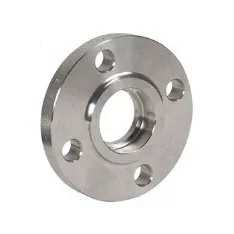-
Cangzhou Yulong Steel Co., Ltd.
-
Phone:
+86 13303177267 -
Email:
admin@ylsteelfittings.com
- English
- Arabic
- Italian
- Spanish
- Portuguese
- German
- kazakh
- Persian
- Greek
- French
- Russian
- Polish
- Thai
- Indonesian
- Vietnamese
- Zulu
- Korean
- Uzbek
- Hindi
- Serbian
- Malay
- Ukrainian
- Gujarati
- Haitian Creole
- hausa
- hawaiian
- Hebrew
- Miao
- Hungarian
- Icelandic
- igbo
- irish
- Japanese
- Javanese
- Kannada
- Khmer
- Rwandese
- Afrikaans
- Albanian
- Amharic
- Armenian
- Azerbaijani
- Basque
- Belarusian
- Bengali
- Bosnian
- Bulgarian
- Catalan
- Cebuano
- China
- China (Taiwan)
- Corsican
- Croatian
- Czech
- Danish
- Esperanto
- Estonian
- Finnish
- Frisian
- Galician
- Georgian
- Kurdish
- Kyrgyz
- Lao
- Latin
- Latvian
- Lithuanian
- Luxembourgish
- Macedonian
- Malgashi
- Malayalam
- Maltese
- Maori
- Marathi
- Mongolian
- Myanmar
- Nepali
- Norwegian
- Norwegian
- Occitan
- Pashto
- Dutch
- Punjabi
- Romanian
- Samoan
- Scottish Gaelic
- Sesotho
- Shona
- Sindhi
- Sinhala
- Slovak
- Slovenian
- Somali
- Sundanese
- Swahili
- Swedish
- Tagalog
- Tajik
- Tamil
- Tatar
- Telugu
- Turkish
- Turkmen
- Urdu
- Uighur
- Welsh
- Bantu
- Yiddish
- Yoruba

Dec . 11, 2024 03:09 Back to list
Flange Reducer Types and Applications in Piping Systems
Understanding Flange Reducers A Comprehensive Overview
In the world of piping and plumbing, various components play crucial roles in ensuring a smooth and efficient fluid transfer system. One such component that is often underrated yet incredibly vital is the flange reducer. This article aims to delve into what flange reducers are, their design, functionality, applications, and benefits, making it a valuable resource for engineers, contractors, and anyone interested in piping systems.
What is a Flange Reducer?
A flange reducer is a type of pipe fitting that connects two pipes of different diameters, allowing for a smooth transition from a larger diameter to a smaller one or vice versa. It features flanged ends for bolting to other fittings or equipment, providing a secure and leak-proof joint. This fitting is crucial in various industrial applications, including water treatment plants, chemical processing, and oil and gas industries.
Flange reducers can be made from various materials, including stainless steel, carbon steel, and PVC, depending on the application's requirements, such as temperature, pressure, and chemical compatibility.
Design and Structure
The design of a flange reducer typically consists of two main sections the larger diameter end and the smaller diameter end, connected by a conical or tapered body. The flange ends are engineered to conform to industry standards, such as ANSI/ASME or DIN, ensuring compatibility with other components in the piping system. Different types of flange configurations — including slip-on, blind, threaded, and weld neck — can be employed, depending on the installation requirements.
Moreover, the size and dimensions of the reducer must meet relevant specifications to ensure proper flow dynamics. A well-designed flange reducer minimizes turbulence and pressure loss, which is essential for system efficiency.
Functionality
The primary function of a flange reducer is to facilitate fluid flow between pipes of varying sizes. When the fluid flows from a larger diameter pipe to a smaller one, it accelerates, increasing velocity while causing a reduction in pressure. This principle is foundational in various engineering applications where changes in flow rate must be managed effectively.
In addition to reducing pipe size, flange reducers can help align different parts of a piping system, making installation easier and more flexible. They also act as a safeguard against pressure surges, which can be damaging to piping systems.
Applications
Flange reducers find application across a wide range of industries
flange reducer

2. Water Treatment In municipal water systems, flange reducers help manage different flow requirements and pressures throughout the treatment process.
3. Chemical Processing The ability to handle corrosive substances makes flange reducers essential in chemical plants where chemical mixtures flow through pipes of different sizes.
4. HVAC Systems In heating, ventilation, and air conditioning systems, flange reducers help in connecting duct systems to manage airflow efficiently.
5. Food and Beverage Industry Sanitary flange reducers are crucial in food processing environments, ensuring compliance with hygiene standards.
Benefits of Flange Reducers
1. Leak-proof Connections The flange design allows for robust, secure connections that minimize the risk of leaks.
2. Versatility Flange reducers can handle various sizes and materials, making them adaptable for different applications.
3. Ease of Installation The flanged ends simplify installation, enabling quick connection and disconnection of piping systems, which is vital for maintenance activities.
4. Flow Efficiency A well-designed flange reducer contributes to optimal flow dynamics, enhancing overall system efficiency.
5. Cost-effectiveness By allowing for seamless integration of different pipe sizes, flange reducers can reduce the need for extensive piping alterations and minimize material costs.
Conclusion
Flange reducers are integral components in numerous piping systems, playing a crucial role in managing fluid dynamics effectively. Understanding their design, functionalities, and applications is essential for professionals in engineering and industrial sectors. By prioritizing the use of quality flange reducers, industries can ensure enhanced efficiency, safety, and longevity of their piping systems. As industries evolve and technology advances, the importance of such fittings will undoubtedly remain critical in the pursuit of optimized fluid handling solutions.
Latest news
-
ANSI 150P SS304 SO FLANGE
NewsFeb.14,2025
-
ASTM A333GR6 STEEL PIPE
NewsJan.20,2025
-
ANSI B16.5 WELDING NECK FLANGE
NewsJan.15,2026
-
ANSI B16.5 SLIP-ON FLANGE
NewsApr.19,2024
-
SABS 1123 FLANGE
NewsJan.15,2025
-
DIN86044 PLATE FLANGE
NewsApr.19,2024
-
DIN2527 BLIND FLANGE
NewsApr.12,2024
-
JIS B2311 Butt-Welding Fittings LR/SR 45°/90° /180°Seamless/Weld
NewsApr.23,2024











